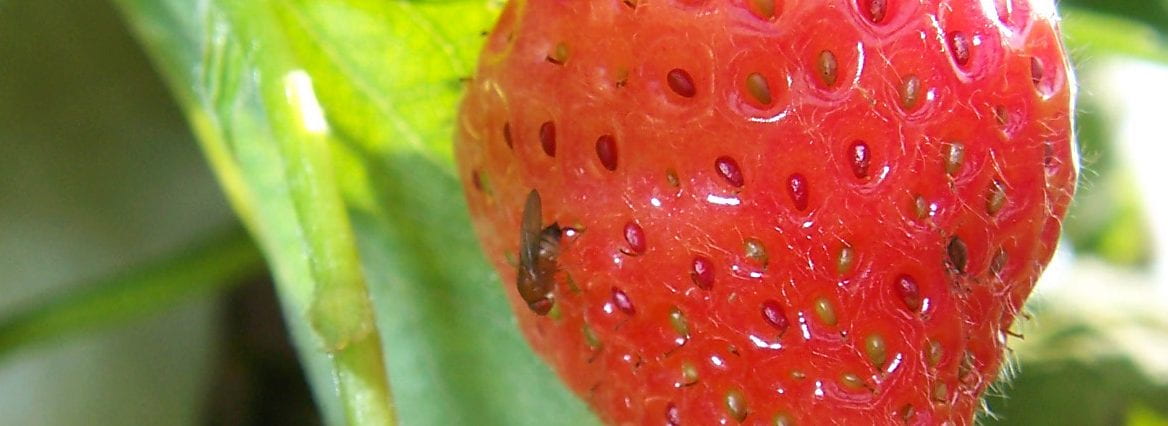The SWD Monitoring Network was once again a success! A big "THANK YOU!" goes out to the 18 Cornell Cooperative Extension and Cornell University scientists who made the network possible in 28 Counties in NY. Funding for the network was provided in 2014 by the NY State Berry Growers Association, the Department of Entomology, Cornell Cooperative Extension Regional Programs, Cornell Cooperative Extension County Associations and the NYS IPM Program.
All but four of the 107 SWD trapping sites in the SWD Monitoring Network caught SWD this year. Those four, in Herkimer and Saratoga Counties, were pulled once the crop was harvested or infestation was found in fruit. We continue to conduct extension at the same time as the research is being done in an attempt to stay ahead of spotted wing!
SWD was first trapped in NY about four weeks later than in 2012 and 2013. Continuous or sustained captures also occurred four weeks later than in prior years. The delayed arrival of SWD into NY spared June strawberries, cherries, summer raspberries and most blueberry varieties from infestations. However, later maturing berries such as fall raspberry, blackberry, day-neutral strawberry and possibly grapes currently are at risk.
Spotted wing first reports were posted on the SWD blog. Cornell scientists alerted growers directly and via newsletters to protect their crops when SWD was found in their area. The NY trap network seems again to have proven successful in accomplishing its primary goal of monitoring for first trap catch of SWD and disseminating information to growers. For next year, we are discussing the possibility of using a commercially available lure in the traps to simplify trapping, doing fruit monitoring, and timing trap placement to coincide with a typical crop phenology such as the end of June strawberry harvest.





